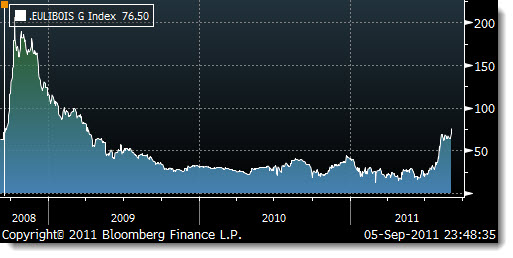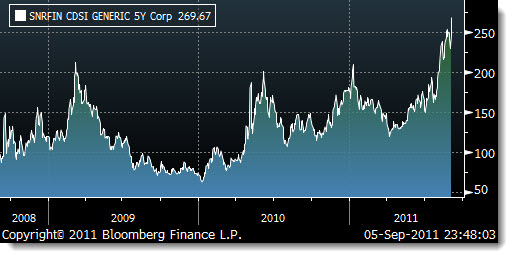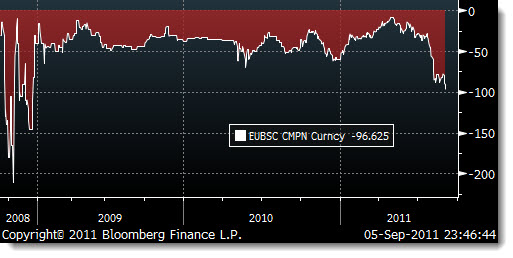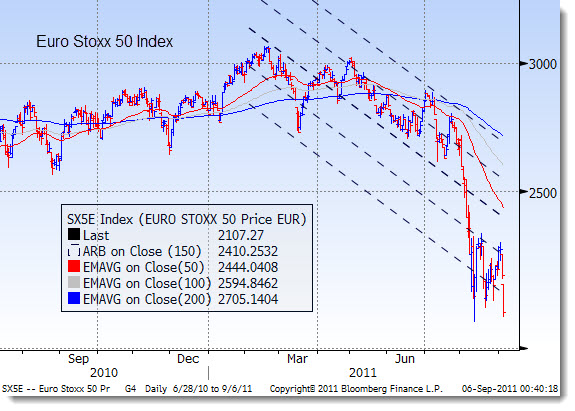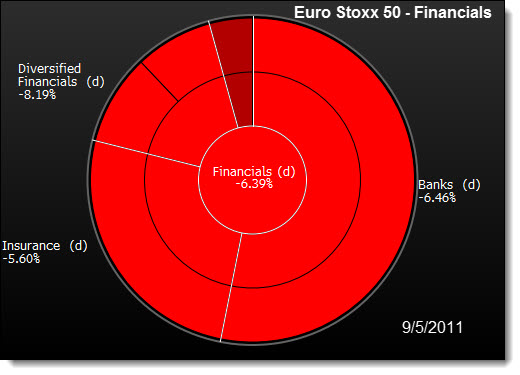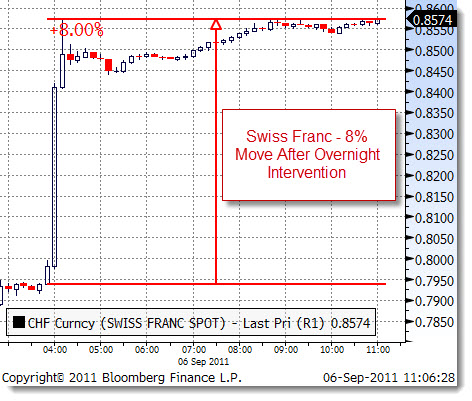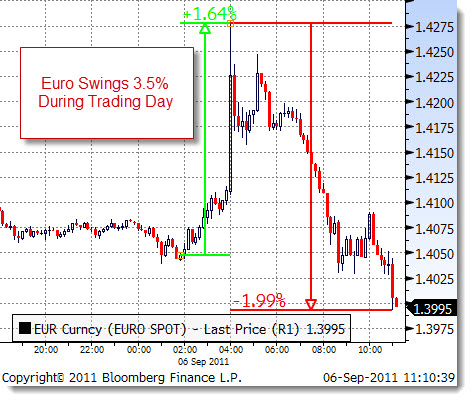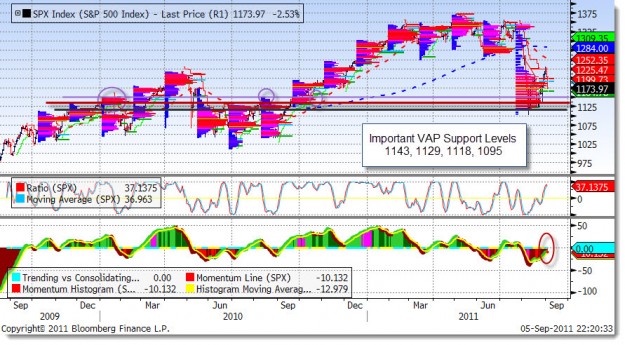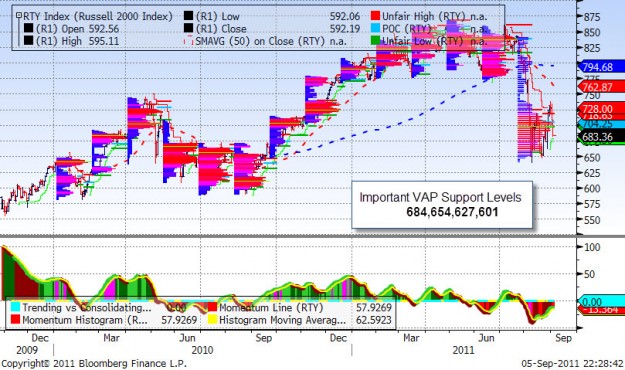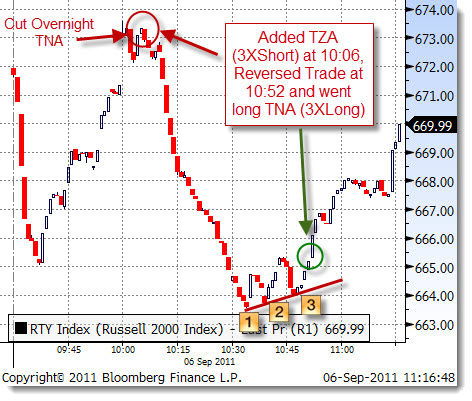During the month of September, we are going to be adding a special section to this site.
The TDI Managed Growth Strategy provides a private “client-only” blog where we discuss the day and our general outlook. Areas that we cover range from current holdings analysis, economic reports, political commentary and more.
The primary purpose of the “client-only” blog is provide information so that clients for whom we manage money will have a better understanding of what is the rationale for portfolio decisions. In addition, the information is designed to be educational so that readers can learn from both our mistakes and successes.
On a daily basis, simply follow www.thedisciplinedinvestor.com or use an RSS reader and point it to : http://tinyurl.com/3u3jahy or http://www.thedisciplinedinvestor.com/blog/category/stocks/insideedition/feed/
___
Latest Podcast Episode: TDI Podcast 228: Curzio Brings Clarity To The Confusion (#228)
Guest(s): Frank Curzio
___
2011-09-06
The fan is being hit by objects left and right. There is a realization that there are severe and potentially unsolvable problems showing through within the EuroZone financial system. After all of the talk and actions, markets have taken a new look and do not like what they are seeing.
Aside from price moves on exchanges, there are other more important measure that are flashing warning signals. Up until recently, there was some level of belief that the ECB and IMF could actually make it work with coarse austerity measures and a stream of bailout funds. Obviously the depth of the problem is more than they can handle.
What was initially presumed to be a liquidity problem is quickly turning into a solvency concern. The main difference being that bailouts are not the solution. One of the ways to find out more about this it to look at inter-bank lending, CDS rates as well as specific ratios and compare those to the time when the U.S. banking crisis was at its peak.
EUR 3MLibor – Overnight Index Swap
The LIBOR-OIS spread is the difference between the LIBOR rate and the OIS rate. Financial organizations use the spread between these two rates to measure the banking system’s health or the creditworthiness of a bank or banking system.
When central banks lower their interest rates, the LIBOR and OIS rates decline, too. The LIBOR-OIS spread measures credit risk by basis points. The lower the points, the better the financial climate.
Notice that the spread is ticking higher. It is no where near what was seen in the days when Lehman collapsed, but it is the highest level since.
iTraxx Europe Financial 5Y CDS
Credit Default Swaps are used as insurance against a default. Often is is used as a hedge and sometimes it is simply a bet against a specific investment. The higher the cost of the CDS, the more likely investors believe that there is a chance of a default or bankruptcy.
The cost to insure the banks/financials within the EuroZone has moved to uncharted territory. This is a sign that the both hedging and directional bets are against the regions banking system.
Euro-USD Basis Swap 3M
An FX swap agreement is a contract in which one party borrows one currency from, and simultaneously lends another to, the second party. Each party uses the repayment obligation to its counter-party as collateral and the amount of repayment is fixed at the FX forward rate as of the start of the contract.
When the Euro/USD basis swap starts to move lower, it can be seen as a time when the risk of owning Euros over U.S. Dollars is increasing. Many believe that the -100 level is a key level that should be watched and -150 is a time when a crisis is occurring. Currently the level rests at -96.625, the lowest since the time of the U.S. banking crisis.
ECB Overnight Facility
The ECB Eurozone Liquidity Recourse to the Deposit Facility is a mechanism that is used to satisfy the liquidity needs of the banking system. Liquidity is supplied on a regular basis, however when the amount begins to rise above average, it may be a sign of deeper problems.
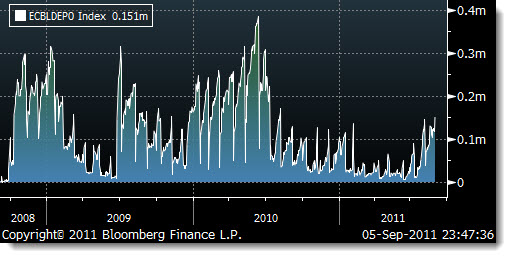 Recently, the amount that has been used to provide needed liquidity is rising above levels seen since the beginning of the EuroZone crisis back in 2010. It is nowhere near the levels that were seen at that time, but a flag should be watched in the context of the other indicators discussed.
Recently, the amount that has been used to provide needed liquidity is rising above levels seen since the beginning of the EuroZone crisis back in 2010. It is nowhere near the levels that were seen at that time, but a flag should be watched in the context of the other indicators discussed.
Taking this all together provides a clearer picture of the severe problems that exist. Now that the citizens of Germany have made it clear to German Chancellor Angela Merkel that any further funding/bailouts to Greece and other countries will be met with voter discontent (aka – throwing her out of office), investors are no longer looking at the EuroZone with optimism.
To show the aversion that investors are showing to the financial sector, consider the chart below:
TDIMG portfolios currently hold a position equal to a 16% short of European equities. This will benefit as the EuroZone stocks fall and also as/if the Euro falls against the U.S. Dollar. In addition, a 16% short position on Emerging Market stocks is also held. We will look to increase these positions if the trend strengthens, up to a total of 40% of the portfolio – in total.
As the overnight markets closed in Asia, there was a quick rally that was sparked as the Swiss National Bank (SNB) committed to defend it currency. There was a remarkable move in the Euro against the Swiss currency. The euro rose as much as 9.7 per cent to SFr1.2158 against the Swissie after the SNB said it would defend a floor of SFr1.20 with “the utmost determination” and was prepared to buy foreign currency in “unlimited quantities”.
Most believe that the move will be short lived and that it may be a sign that there is greater concern over the potential for the Euro currency to maintain its level above $1.40.
“In fact, the measures taken by the SNB could even increase the market speculation of the European Central Bank becoming less hawkish and prepare the ground for rate cuts,” said Ian Stannard at Morgan Stanley.
The Euro also has some very large swings. Some of this is due to the Swissy move and some due to the instability of the region.
Some of the levels we are looking at for the S&P 500 and the R2000.
After the opening bell, we traded in and out of the R2000 index which added some additional return thus far. There is a discernible low/support level for the day thus far at 664 on the R2000 index. Three separate times the level was hit and then bounced off. On the thrid time, we rleesed the short position (TZA) and reversed the position and added a 5% (15% synthetic) position in TNA.
As for economics, the ISM Non-Manufacturing number came in better than expected. That was good to see, although there were some other indications underying the report that need to be considered. Especially the prices paid component.
Prices Paid = 64.2 vs. 56.6
New Orders = 52.8 vs. 51.7
ISM Employment 51.6 vs. 52.5
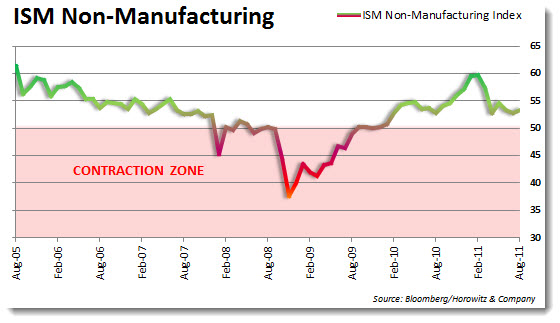
Even though we hold three stocks on the long side (CF, HANS and RES) in aggregated they are performing well, considering the size of the move for indices. We will put up additional information on each in tomorrows update. For now, the strategy is the same: Stay out of trouble until the storm passes and look to profit on interim market inefficiencies.


